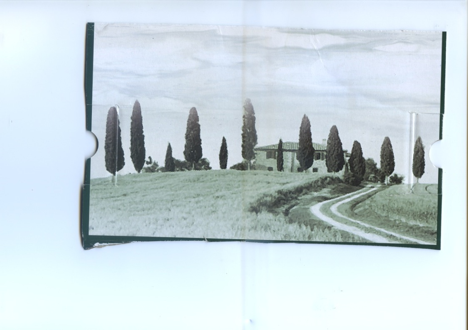 It has nothing to do with two-dimensional or more dimensional music. It has to do with stale thinking, instead.
It has nothing to do with two-dimensional or more dimensional music. It has to do with stale thinking, instead.
The above image is a representation of what one expects Tuscany to look like: green grass covered sweet hills, cypress, nice, large-family farm-houses.
But, the side effects:
Gravel roads to drive on with a SUV or a cross-over car, or to walk with dogs, or to ride horses.
Twenty miles away from the nearest town, or one hour – in good weather; double it with rain or snow. Six months a year.
The closest supermarket, pharmacy, tool shop are also twenty miles away. Would you leave your eighty years or so old parents to live there, without any kind of support?
Beautiful Tuscany, a stereotype.
Quality- and risk-wise, we have to be more careful of stereotypes: we must not neglect their relevance as such, but – at the same time – we’ve to dig out of them what they really mean.
Stereotypes have almost grown to beliefs – it’s always been done so, it’ll be always done so; that’s the hardest way to discover new, easier paths.
There might be risk where we don’t think there is none, and vice-versa.
Let’s take the example of pedestrians car accidents: almost one million people are annually killed because of these crashes, and many more are injured. The car-making industry has undergone intensive and expensive studies to redesign bumpers, hoods / bonnets, windshields and pillars, to the point that in some high class cars the hood / bonnet lifts when a pedestrian is hit.
If that may work with front impacts, what about side impacts?
Upon parallel impacts, external side mirrors can hurt people’s arms and sides, and kids’ head.
There’s one more point that car designers have seemed not to consider properly: pedestrians are not hurt by vertical hoods / bonnets, like buses’ and trucks’.
If this were true, we could simply forget our long-nosed cars and buy the much more roomy vans, instead.
We started from a nice picture of what we think that Tuscany is: as such, Tuscany is more similar to a japanese garden instead of a natural landscape.
So there can be risk, which may be an artifact made of our pre-conceptions.
